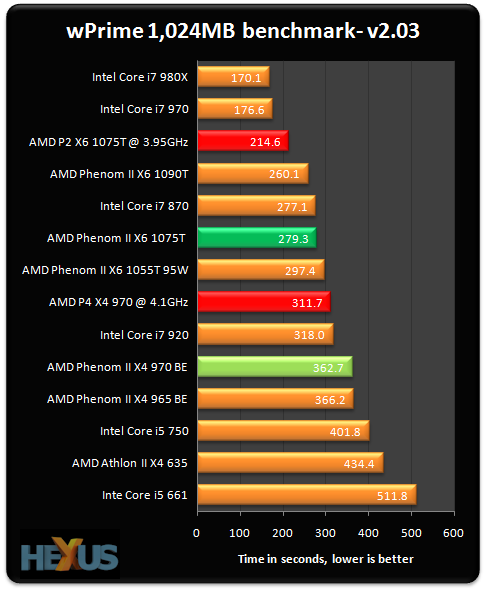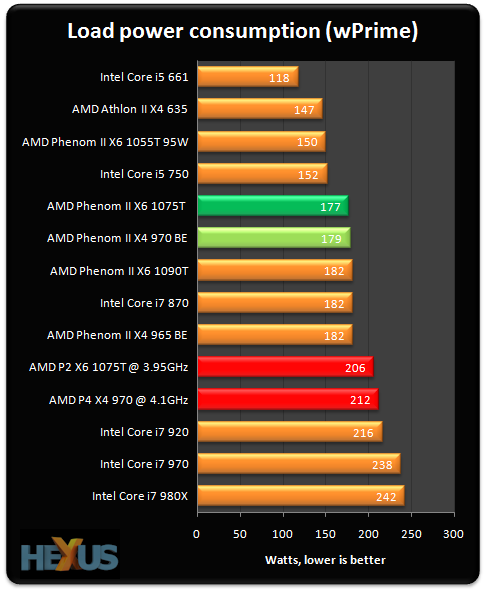Overclocking the duo
We overclock the chips by using the standard HEXUS method of adding an extra 10 per cent voltage to a number of lines, disabling Cool'n'Quiet and Turbo Core (if applicable), and then inching up until Prime 95 failed within two minutes. This is a crude method of overclocking, granted, but does provide a reasonable basis for evaluating the frequency headroom available in the sample CPUs. Both were cooled by a £15 Arctic Cooling Freezer 7 Pro v2.1 heatsink.The Phenom II X6 1075T doesn't feature an unlocked multiplier so we simply dropped the memory frequency to DDR3-800, HT speed to 1,000MHz, and raised the bus speed. The chip topped out at a 263MHz clock, giving a final frequency of 3,955.5MHz. This overclock is lower than on the 1055T 95W's, by the way.
Phenom II X4 970 BE gives us greater flexibility in overclocking. Tinkering around with various combinations provided a final, stable speed of 4.12GHz. Here's how the overclocked duo panned out in the wPrime benchmark.

The 1075T's performance goes some way to bridging the huge gap that exists between Intel's six-core, 12-threaded chips and the rest of the pack.











